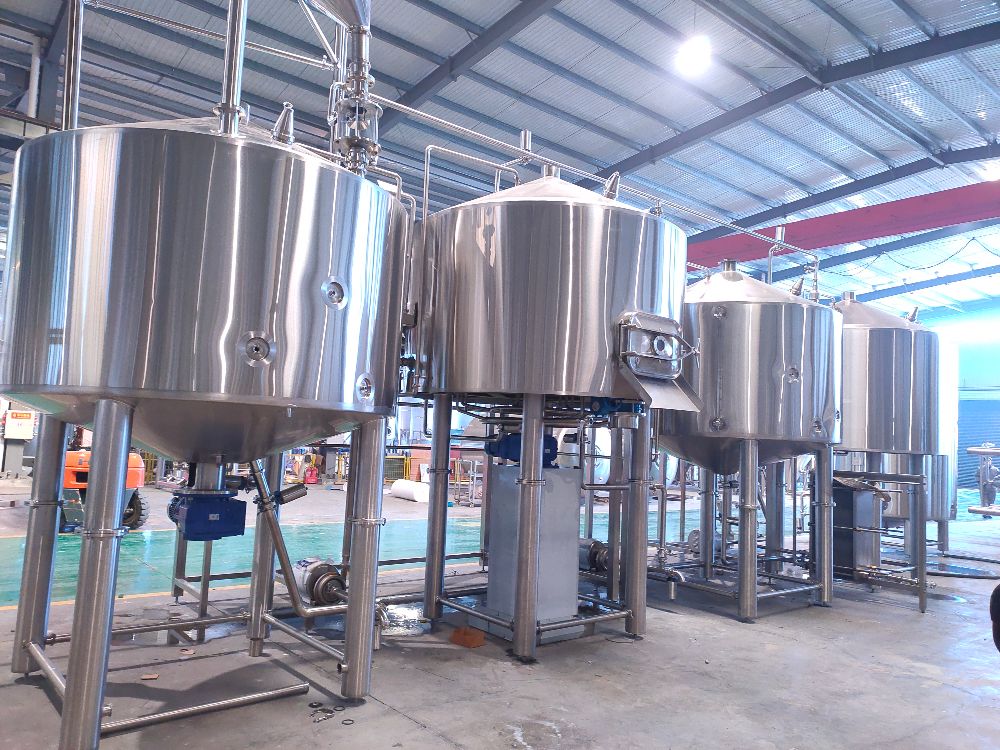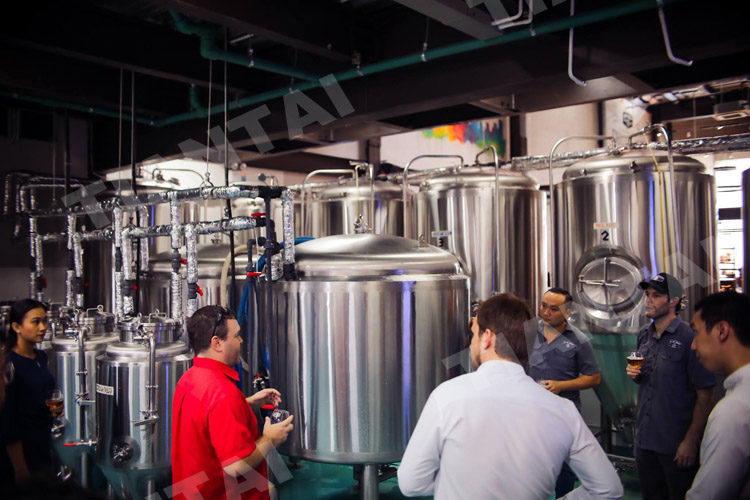Beer Filters and Filtering
- Feb 28, 2022
- 179
- tiantai
The concept of filtering is a purely mechanical one and very simple: build a screen with holes in it too small to allow the passage of the particles you don’t want in the final product. Then build this screen large enough that as the holes are blocked by particles, enough passageways remain to allow the flow of the liquid you’re trying to filter.
Filtering billions of microscopic particles from beer with filters small enough to be practical requires pressure. The beer has to be forced through the filter material under enough pressure to ensure that as the passageways are plugged, new passageways are found. Therefore, any practical filtration of beer requires the use of pressure to drive the beer through the filter material. The only practical solution for amateur brewers is a complete CO2 kegging system. The bottom line is this: If you want filtered beer, you’ll need to invest in a kegging system.

Filters all share some basic design features. Beer enters an inlet, is forced to pass through some sort of filter material, and exits an outlet. The filter material may be an integral part of the filter housing or may be a removable cartridge. Filters commonly sold for household drinking water use are exactly the same used for filtering beer. Polypropylene is the most common filter material, available in three styles: wound, spun, and pleated.
Filters are most often rated by the average size of the particles they will filter, with the size given in microns. Filters intended to keep out rust particles for household water systems may be rated “nominal 20 microns” for example, while those intended to filter out bacteria may be rated “nominal 0.4 microns.”
A pleated filter is basically a sheet of very finely spun plastic that is folded, or pleated, much like an auto air cleaner. The pleating increases the surface area of the filter (more passageways) while keeping the overall size of the filter to a minimum. The liquid to be filtered is forced from the outside of the pleated cylinder to the center, then out through the filter housing outlet.
A wound filter looks like nothing fancier than a spool of white cord. The plastic fibers are first made into a heavy cord about two millimeters in diameter, then the cord is wound onto a perforated plastic, cylindrical spool. The liquid to be filtered is forced to pass from the outside of the winding to the inside, through the perforated cylindrical spool, then out through the filter housing ( Figure 1). Wound filters are usually available only in a 20-micron rating and are useless for filtering anything but trub from your beer.
Spun filters look a little like stiff foam packing material and are usually available with a five-micron rating. The cartridges have the same overall dimensions of the pleated and wound filters, and load the same way into the filter housing.
An important aspect of these filters is their rated efficiency. The efficiency rating of a filter reflects the percentage of passed particles smaller than the filter’s micron rating. For example for a 0.5 micron pleated filter rated 99.8 percent efficient (a $35 to $50 filter cartridge), only 0.2 percent of the particles it allows to pass through will be larger than 0.5 microns.
Although the spun filters available at plumbing or building materials stores are rated “nominal five microns,” usually they don’t have efficiency ratings shown.
Ceramic materials are also used for household filtration systems, particularly those that are intended to remove bacteria. These filters are too fine for beer filtration use because they remove particles so small that color and flavor are degraded. Such extremes of filtration are used in the commercial megabreweries, since neither substantial color nor overwhelming flavor are desired properties of the super-light lagers.
If you want to experiment with the variety of filter cartridges available, then choose a filter system that supports replaceable filter cartridges. After looking around at the products available, you’ll discover that many cartridges work in several popular canisters. By choosing a system that’s well supported by a local store or other supplier, you can decide for yourself if a 0.5 micron filter affects taste or if a one-micron filter leaves your beer clear enough.
Filters suitable for beer are available from many sources, including your favorite homebrew supply shop, many mail-order shops, and even the local home improvement or plumbing shop. Most of the filters sold for homebrewers are in fact just “under-sink” or “whole-home” filter canisters with replaceable cartridges. These systems are built to be plumbed into your household plumbing with standard pipe fittings and can be easily set up with hose barb fittings for both inlets and outlets.
An advantage of selecting a filter from your homebrew supply shop or a homebrew mail-order house is that it will come with all the fittings you need to connect the filter to your CO2 and keg system, and the supplier will sell a filter that is appropriate for beer filtration. On the other hand if you decide to do it yourself down at the building materials store, find out which cartridges are routinely available.
Filtering billions of microscopic particles from beer with filters small enough to be practical requires pressure. The beer has to be forced through the filter material under enough pressure to ensure that as the passageways are plugged, new passageways are found. Therefore, any practical filtration of beer requires the use of pressure to drive the beer through the filter material. The only practical solution for amateur brewers is a complete CO2 kegging system. The bottom line is this: If you want filtered beer, you’ll need to invest in a kegging system.

Filters all share some basic design features. Beer enters an inlet, is forced to pass through some sort of filter material, and exits an outlet. The filter material may be an integral part of the filter housing or may be a removable cartridge. Filters commonly sold for household drinking water use are exactly the same used for filtering beer. Polypropylene is the most common filter material, available in three styles: wound, spun, and pleated.
Filters are most often rated by the average size of the particles they will filter, with the size given in microns. Filters intended to keep out rust particles for household water systems may be rated “nominal 20 microns” for example, while those intended to filter out bacteria may be rated “nominal 0.4 microns.”
A pleated filter is basically a sheet of very finely spun plastic that is folded, or pleated, much like an auto air cleaner. The pleating increases the surface area of the filter (more passageways) while keeping the overall size of the filter to a minimum. The liquid to be filtered is forced from the outside of the pleated cylinder to the center, then out through the filter housing outlet.
A wound filter looks like nothing fancier than a spool of white cord. The plastic fibers are first made into a heavy cord about two millimeters in diameter, then the cord is wound onto a perforated plastic, cylindrical spool. The liquid to be filtered is forced to pass from the outside of the winding to the inside, through the perforated cylindrical spool, then out through the filter housing ( Figure 1). Wound filters are usually available only in a 20-micron rating and are useless for filtering anything but trub from your beer.
Spun filters look a little like stiff foam packing material and are usually available with a five-micron rating. The cartridges have the same overall dimensions of the pleated and wound filters, and load the same way into the filter housing.
An important aspect of these filters is their rated efficiency. The efficiency rating of a filter reflects the percentage of passed particles smaller than the filter’s micron rating. For example for a 0.5 micron pleated filter rated 99.8 percent efficient (a $35 to $50 filter cartridge), only 0.2 percent of the particles it allows to pass through will be larger than 0.5 microns.
Although the spun filters available at plumbing or building materials stores are rated “nominal five microns,” usually they don’t have efficiency ratings shown.
Ceramic materials are also used for household filtration systems, particularly those that are intended to remove bacteria. These filters are too fine for beer filtration use because they remove particles so small that color and flavor are degraded. Such extremes of filtration are used in the commercial megabreweries, since neither substantial color nor overwhelming flavor are desired properties of the super-light lagers.
If you want to experiment with the variety of filter cartridges available, then choose a filter system that supports replaceable filter cartridges. After looking around at the products available, you’ll discover that many cartridges work in several popular canisters. By choosing a system that’s well supported by a local store or other supplier, you can decide for yourself if a 0.5 micron filter affects taste or if a one-micron filter leaves your beer clear enough.
Filters suitable for beer are available from many sources, including your favorite homebrew supply shop, many mail-order shops, and even the local home improvement or plumbing shop. Most of the filters sold for homebrewers are in fact just “under-sink” or “whole-home” filter canisters with replaceable cartridges. These systems are built to be plumbed into your household plumbing with standard pipe fittings and can be easily set up with hose barb fittings for both inlets and outlets.
An advantage of selecting a filter from your homebrew supply shop or a homebrew mail-order house is that it will come with all the fittings you need to connect the filter to your CO2 and keg system, and the supplier will sell a filter that is appropriate for beer filtration. On the other hand if you decide to do it yourself down at the building materials store, find out which cartridges are routinely available.


.jpg)

